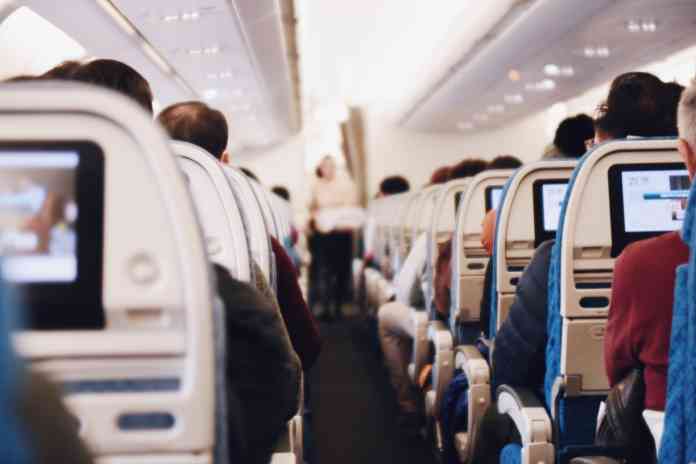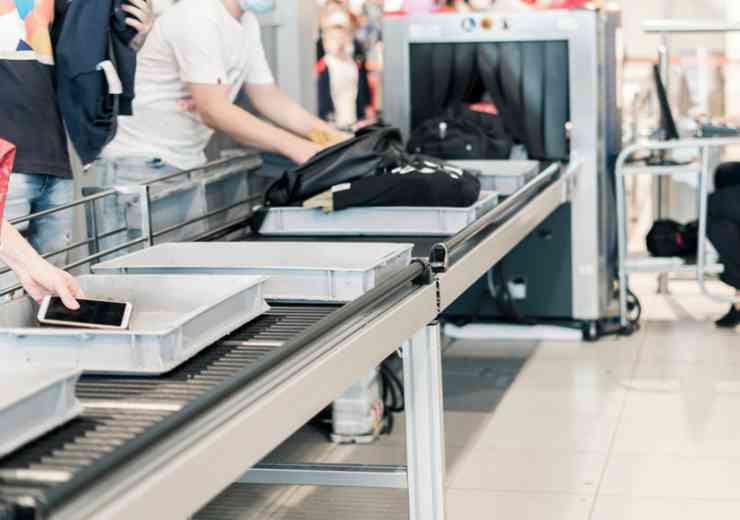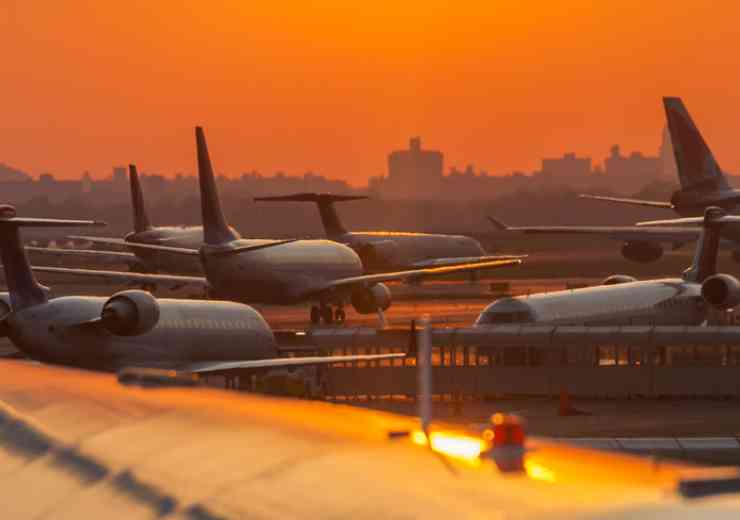
Inflight Security: are hijackings now passé?
The hijacking of aircraft may seem to be somewhat passé; they are certainly not as commonplace as they were in the 1960s, 70s and 80s. Blank Panthers no longer seize aircraft and divert them to Cuba; Palestinian revolutionary groups have realised that their actions did little to engender support for their cause; and, even those lone asylum-seeking individuals wishing to hijack aircraft in order to reach pastures greener now recognise that there are easier ways to achieve their goals.
The act of hijacking – whilst never laudable – was brought into further disrepute by the suicidal acts perpetrated by 19 hijackers on 11 September 2001. Those who might have hijacked aircraft to make a political point, secure the release of imprisoned colleagues or obtain funding, no longer wished to be seen in the same vein as those who had wrought devastation on population centres.
Can we claim success in terms of protecting aircraft from inflight attacks perpetrated by those on board? The simple answer is ‘yes’….to a certain extent! The array of technologies we are currently deploying at airport security checkpoints do enable screeners to identify traditional weaponry and terrorists have realised that they do not need to board aircraft to effect mass casualty incidents; marauding firearms attackers and suicide bombers have demonstrated that they can just as easily target airport terminal buildings without having to worry themselves about being detected during the security process.
Yet the aforementioned 9/11 attacks also illustrate the perils of complacency and the preparedness for those who still view the seizure of aircraft as a means to create maximum fear to conjure up new attack methodologies. If we consider the post-9/11 environment, weapons and explosives have been infiltrated onto aircraft in very creative ways. Most notably, Richard Reid concealed his explosive device in his shoes, whilst Umar Farouk Abdulmutallab opted for to use his underwear. Less well known, in August 2004 two Chechen ‘black widows’ targeted two Russian airliners departing Moscow’s Domodedovo Airport with IEDs, paying bribes to get through the airport security system, and airport insiders facilitated the bombing of the Metrojet flight, operating from Sharm el-Sheikh to St. Petersburg, in 2015, and provided the laptop device to the bomb-carrier - after the security checkpoint - which detonated on a Daallo Airlines flight from Mogadishu to Djibouti in 2016. In China, airport security was bypassed by members of ETIM by means of crutches, which were passed over the top of an X-ray machine, belonging to an individual feigning disability; the crutches contained the weapons used to hijack the Tianjin Airlines flight.
If we focus exclusively on the terrorist threat, one could be forgiven for adopting a ‘problem solved’ attitude. Incidents are fortunately exceptionally rare. However, aviation security is not just about counterterrorism and our preventative measures are supposed to protect us from all unlawful attacks against civil aviation, be they perpetrated by terrorists or petty criminals, industry insiders or those with poor mental health.
Mental health issues are often branded a safety issue rather than a security concern. This is the result of budgets being approved off the back of the terrorist threat and by those tasked with security management being more in tune with the risk analysis within the political arena. After all, when it comes to mental health, there is no such thing as a low-risk route; poor mental health poses a challenge to every airline wherever they operate. The classic example of this is the attempted hijacking, in 2003, of a Qantas domestic flight, en route from Melbourne to Launceston, by a passenger with paranoid schizophrenia armed with two home-made wooden stakes shaped into knives; the wooden weapons could, of course, not be detected by the archway metal detector.
As we emerge from the pandemic and return to the skies, we bring with us the legacy of Covid-19. Passengers and crew alike have been impacted in many ways – loss of loved ones, loss of income and loss of status to name but a few – and the results of this can impact passenger behaviour. All the indications are that unruly passenger incidents have risen in frequency despite the downturn in passenger numbers; disputes over the wearing of face masks, frustration over the amount of time it takes to get through under-staffed checkpoints and changing flight schedules as crews call in sick, all add to the anxiety of air travel. Whilst most incidents are manageable, it only takes one extreme incident to have catastrophic consequences. And aviation is in the business of identifying needles in haystacks…
I often ask crew trainers if they can identify the last time an aircraft ditched at sea. After all, not only are they trained to managing a ditching, evacuate an aircraft and utilise the life rafts, so are all the passengers in the pre-flight safety briefing. I am not arguing against it. As a reasonably frequent flyer, I am delighted they know what to do! However, I find it disturbing that trainers are unable to provide any recent examples of life raft usage – something that they spend hours learning how to use – but, when it comes to application of unruly passenger restraints, it is a subject that is addressed superficially and most crewmembers are not actually tested as to whether they can actual effect a restraint. Restraints, meanwhile, take place every day.
Pilot, or aircraft-assisted, suicide is, whilst not a frequent occurrence, certainly a cause for concern. It was not just Germanwings. In November 2013, we know that it was the pilot of a LAM Mozambique Airlines flight who crashed his own aircraft in Namibia, and there is considerable speculation that the missing Malaysia Airlines flight 370 was the result of intentional actions taken in the cockpit. Add in Royal Air Maroc, SilkAir, Egyptair and the significant number of incidents involving general aviation and we can appreciate that this is a security concern that cannot be written off as isolated incidents.
Last, but by no means least, we have to consider the implications of the current war Russia is waging against Ukraine on inflight security. Chemical and biological weapon detection capability is not part of our security apparatus, but crewmembers are expected to know how to respond to a chem/bio incident should it occur on board…and there is every indication that such substances might be used inflight. Indeed, they have been.
The 2018 usage, by Russian agents, of the Novichok nerve agent to try and assassinate Sergei Skripal and his daughter Yulia in Salisbury, UK, had, on the surface, no industry context – except, of course, how the agent was brought into the United Kingdom in the first place. But, how many crewmembers are cognisant of the details of the attempted assassinations of Alexei Navalny and Anna Politkovskaya or the actual assassination of Alexander Litvinenko?
Litvinenko was intentionally contaminated with the radioactive isotope Polonium-210 when his assassins introduced the deadly toxic substance to his tea in a London restaurant in 2006. Approximately 700 people were identified as having been exposed to radiation as a result, but from an aviation perspective it is important to note that three British Airways aircraft were identified to have had small traces of Polonium-210 on them. In excess of 33,000 passengers had the potential to have been exposed to contamination, let alone the impact to aircrew and ground staff who had serviced the aircraft. Fortunately, there were no further deaths.
On 20 August 2020 Alexei Navalny, Russia’s opposition leader, was contaminated with Novichok. Navalny fell ill on a domestic S7 airlines flight from the Siberian city of Tomsk to Moscow. As his health deteriorated, and given that he was screaming in agony, the crew elected to divert to Omsk where he was hospitalised; two days later he was sent to Berlin for specialist treatment. Whilst Navalny was filmed drinking tea at Tomsk Airport prior to boarding his flight, it is believed that he was poisoned at the Xander Hotel he had been staying at in Tomsk; traces of Novichok were found on a bottle from the mini bar in his room.
Less well known is the case of human rights activist and Russian journalist Anna Politkovskaya. US-born Politkovskaya, eventually shot dead in a lift in her apartment block in 2006, had previously been poisoned on an Aeroflot flight from Moscow Vnukovo to Rostov in September 2004; she was travelling to the Caucasus to cover the Beslan school siege.
Suffice to say that current political events cannot be divorced from the threat to civil aviation.
Whilst hijackings may not be as frequent as they were in the past, inflight incidents continue to occur with frightening frequency. For flight attendants, there is little that they can do about MANPADS, drones or cockpit laser illumination, nor can they be expected to respond to acts of cyber terrorism. That does not mean we can scale back our security training.
Quite the opposite. With prohibited and restricted items which might pose a threat to a flight being far smaller than the guns, grenades and knives of yesteryear, airlines need to be adapting their aircraft search protocols, embellishing their physical restraint training and drilling all their staff in behavioural analysis techniques. After all, flight attendants are the best profilers in the industry; they know how to identify problematic passengers and their lives are on the line!
Written by Philip Baum, managing director of Green Light Ltd., Visiting Professor of Aviation Security at Coventry University and chair of Behavioural Analysis 2022. He can be contacted at editor@avsec.com
















